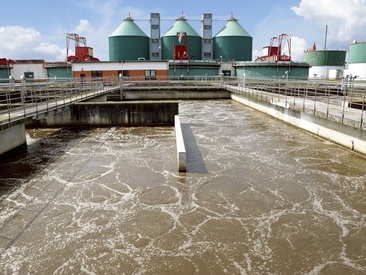
Many systems such as pulp mills operate at an inlet pH > 9.5 which is not often mentioned in literature. This constant loading creates an environment where alkaliphile, organisms that thrive at pH from 8.7 - 11.0. Alkaliphiles function like "normal" wastewater organisms except their enzyme systems are optimized for high pH environments. As with temperature, many organisms can be facultative alkaliphiles which thrive from pH 6.5 - 10.5 (common in Bacillus sp).
Systems that operate in lower pH are also seen in in systems with influent from metal finishing, fruit processing, and some chemical operations. If a system is operated below pH of 5.5, we start to see increasing number of fungal cultures. Other organisms that thrive in acid pH with high levels of sulfides include Thiobacillus sp. which create their own acid environment by converting H2S into H2SO4 when oxygen levels are sufficient. All of the acidophile organisms have enzymes and cellular operations that thrive with the low pH.
What we do not see in either low pH or high pH wastewater systems is the growth of autotrophic nitriiers which thrive at pH from 7.2 - 8.0 when you go below 6.5 or above 8.5 the autotrophic nitifiers (Nitrosomonas and Nitrobacter) will "washout" or "die" and ammonia oxidation will become compromised.
The biggest challenges for operators occur when a system undergoes a rapid pH shift. While a biological system can often adapt to long run high or low pH operation, a rapid shift in pH from of can have immediate impact on the biomass. Often the first observed change following a pH shock is increased TSS & turbidity at the effluent. The bacteria in response to unfavorable conditions begin to lose beneficial biopolymer bonds that form floc and biofilms. If rapidly corrected to normal pH levels, the biomass should rapidly come back to proper floc/biofilm formation. In cases where the pH swing also causes cell death and more complete biopolymer failure, operators often find a benefit to adding adapted cultures to avoid the time lag seen to bring the system back into proper biomass conditions (also known as decline phase) where microbes are at maximum density and proper biofilm conditions.

 RSS Feed
RSS Feed